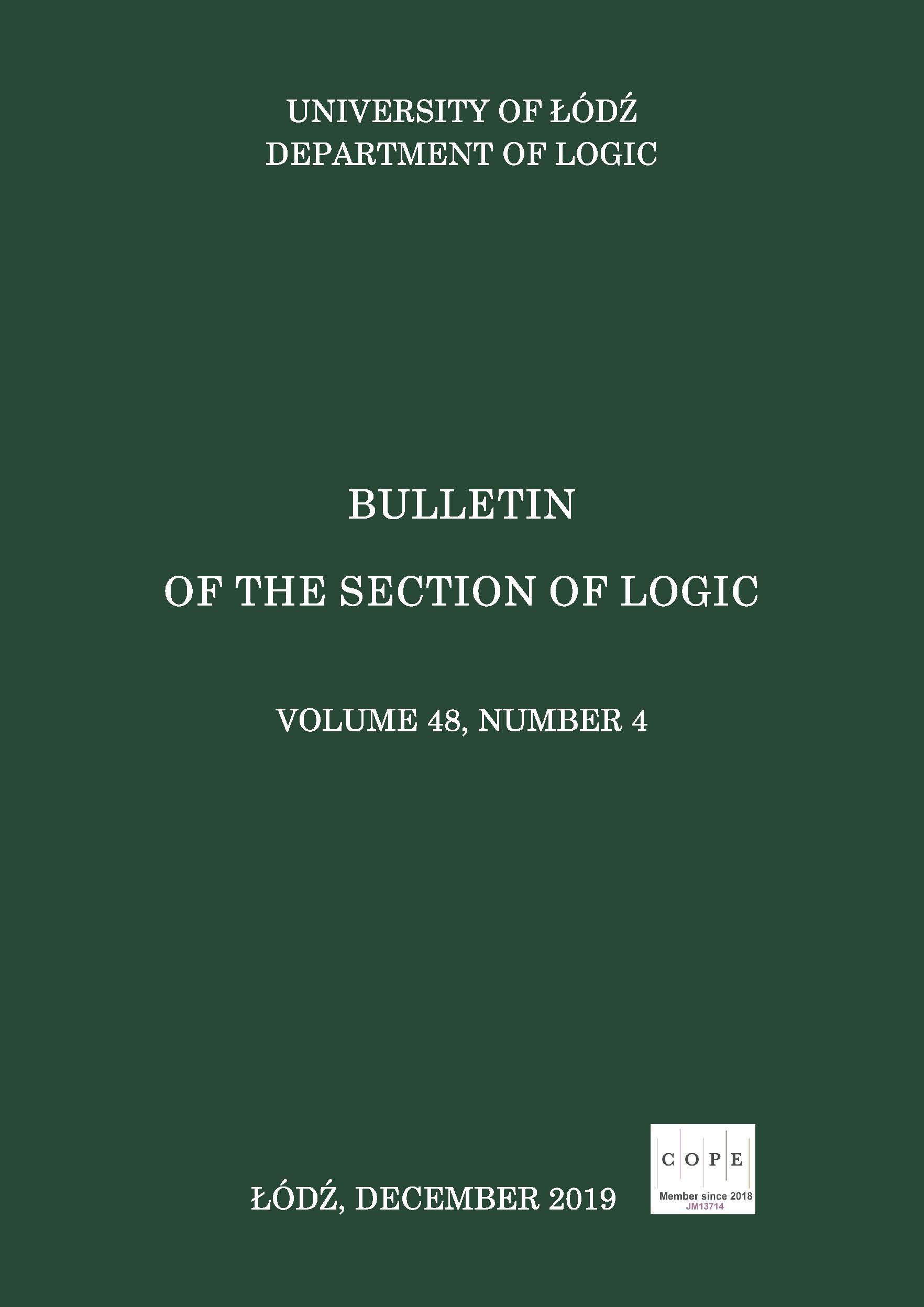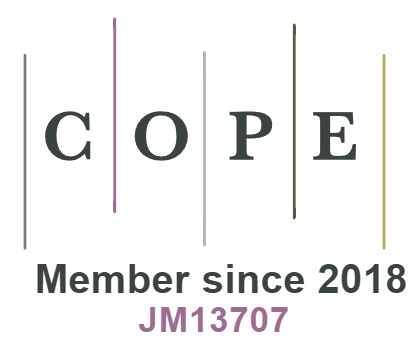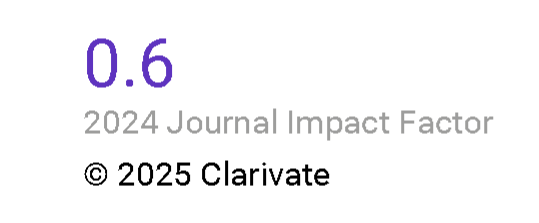Disjunctive Multiple-Conclusion Consequence Relations
DOI:
https://doi.org/10.18778/0138-0680.48.4.05Keywords:
multiple-conclusion consequence relation, closure operation, Galois connectionAbstract
The concept of multiple-conclusion consequence relation from [8] and [7] is considered. The closure operation C assigning to any binary relation r (dened on the power set of a set of all formulas of a given language) the least multiple-conclusion consequence relation containing r, is dened on the grounds of a natural Galois connection. It is shown that the very closure C is an isomorphism from the power set algebra of a simple binary relation to the Boolean algebra of all multiple-conclusion consequence relations.
References
[1] T. S. Blyth, Lattices and Ordered Algebraic Structures, Springer, 2005. https://doi.org/10.1007/b139095
Google Scholar
[2] K. Denecke, M. Erné, S. L. Wismath (eds.), Galois Connections and Applications, Kluwer, 2004. https://doi.org/10.1007/978-1-4020-1898-5
Google Scholar
[3] F. Domenach, B. Leclerc, Biclosed binary relations and Galois connections, Order, Vol. 18 (2001), pp. 89–104. https://doi.org/10.1023/A:1010662327346
Google Scholar
[4] M. Erné, J. Koslowski, A. Melton, G. E. Strecker, A Primer on Galois Connections, Annals of the New York Academy of Sciences, Vol. 704 (1993), pp. 103–125. https://doi.org/10.1111/j.1749-6632.1993.tb52513.x
Google Scholar
[5] G. K. E. Gentzen, Untersuchungen über das logische Schließen. I, Mathematische Zeitschrift, Vol. 39 (1934), pp. 176–210, [English translation: Investigation into Logical Deduction, [in:] M. E. Szabo, The collected Works of Gerhard Gentzen, North Holland, 1969, pp. 68–131.] https://doi.org/10.1007/BF01201353
Google Scholar
[6] G. Payette, P. K. Schotch, Remarks on the Scott-Lindenbaum Theorem, Studia Logica, Vol. 102 (2014), pp. 1003–1020. https://doi.org/10.1007/s11225-013-9519-y
Google Scholar
[7] D. Scott, Completeness and axiomatizability in many-valued logic, Proceedings of Symposia in Pure Mathematics, Vol. 25 (Proceedings of the Tarski Symposium), American Mathematical Society 1974, pp. 411–435.
Google Scholar
[8] D. J. Shoesmith, T. J. Smiley, Multiple-conclusion Logic, Cambridge 1978. https://doi.org/10.1017/CBO9780511565687
Google Scholar
[9] T. Skura, A. Wiśniewski, A system for proper multiple-conclusion entailment, Logic and Logical Philosophy, Vol. 24 (2015), pp. 241–253. http://dx.doi.org/10.12775/LLP.2015.001
Google Scholar
[10] R. Wójcicki, Dual counterparts of consequence operations, Bulletin of the Section of Logic, Vol. 2 (1973), pp. 54–56.
Google Scholar
[11] J. Zygmunt, An Essay in Matrix Semantics for Consequence Relations, Wydawnictwo Uniwersytetu Wrocławskiego, 1984.
Google Scholar
Downloads
Published
How to Cite
Issue
Section
License
Copyright (c) 2019 Bulletin of the Section of Logic

This work is licensed under a Creative Commons Attribution-NonCommercial-NoDerivatives 4.0 International License.















